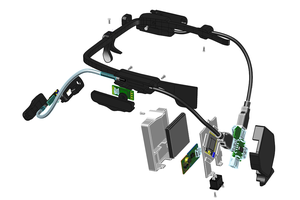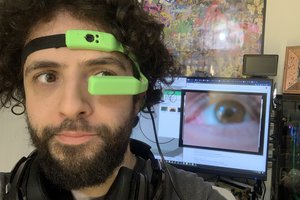I decided first and foremost to keep the price of the device under $100 and as simple as possible so anyone can put it together regardless of what country they live in, their socioeconomic position or level of expertise. Its composed of the visual compute device (VCD) and the wearable camera module (WCM).
The final device will require very little soldering and two simple 3D printed cases, one for the VCD and battery and another for the WCM. The wearable camera module will run through a wire connected to the device and it will have a clip so it can be attached to an existing pair of glasses. The idea is that the device and battery will be inside the aforementioned case which will be no bigger than the average cellphone and can be kept close to the body so the user can feel the haptic vibrations of the motor for extra kinesthetic communication.
However most of the alerts will come from a pair of headphones connected to the 3.5mm jack. Because the system can recognize objects, their position and calculate distances with OpenCV it will simply read those results to the user (eg: "bike 3 meters ahead" / "car approaching to your left"). I choose to use headphones to lower the overall cost and because a built-in speaker on the Rpi or wearable camera module could fail and be difficult (and expensive) to repair while regular headphones are fairly common and cheap.
 JVS
JVS
 Makeroni Labs
Makeroni Labs

 Michael Justin Sexton
Michael Justin Sexton
 Zack Freedman
Zack Freedman